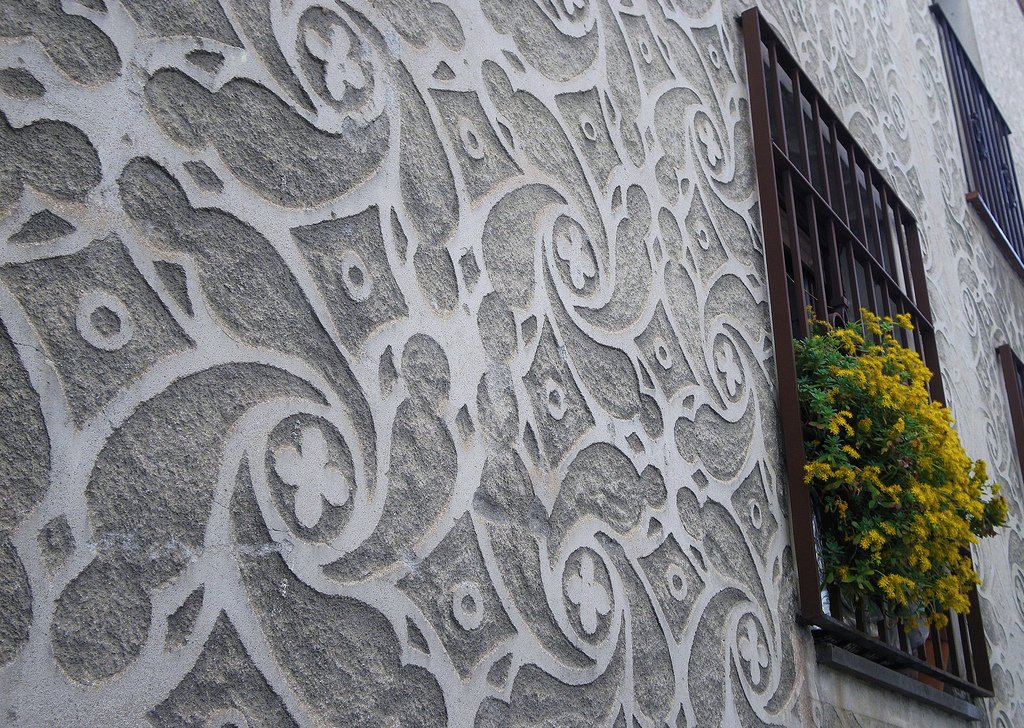#4814. Historical Facade with Ornamental Sgraffito and Contrasting Floral Accent
The image captures an impressive building facade with relief plasterwork executed in the sgraffito technique. The wall is adorned with an intricate ornamental pattern dominated by elegant scrolls, spirals, and geometric motifs. There is a clear contrast between the protruding light elements of the decor and the darker recessed areas, creating a rich interplay of light and shadow.
Compositionally, the facade presents itself as a unified decorative canvas where ornamental elements repeat and flow into one another, forming a harmonious holistic structure. Among the patterns, one can distinguish trefoils and floral motifs, which may indicate the influence of Neo-Gothic or Art Nouveau styles in the building's design.
On the right side of the image, a window with a dark brown frame is visible, creating an expressive contrast with the white wall. A special accent is provided by a bright yellow plant, likely mimosa or bougainvillea, which effectively frames the window opening and adds a living note to the strict geometry of the facade.
This type of decorative wall treatment is characteristic of certain regions in Europe and is often found in historical architecture, where it demonstrates not only an aesthetic function but also high craftsmanship.
